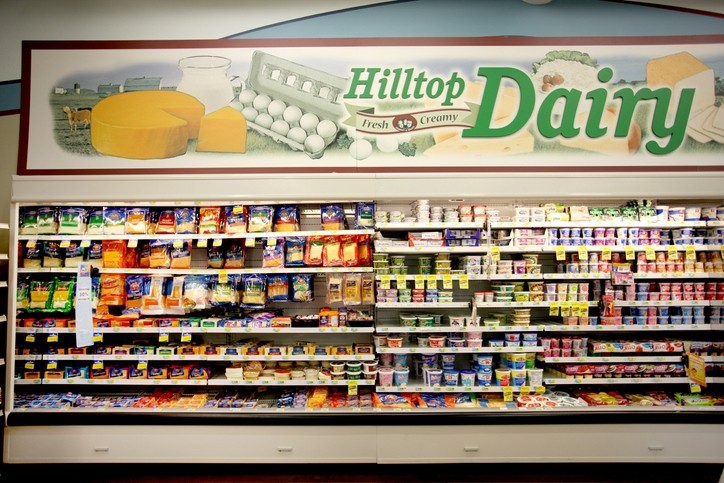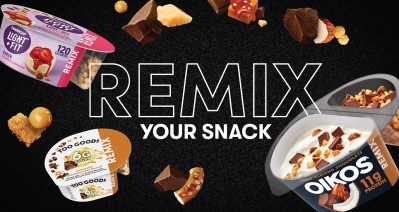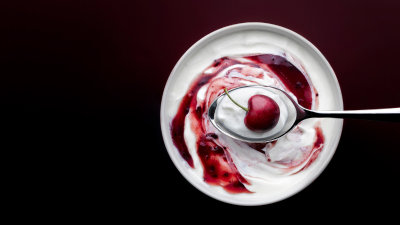High prices dampen dairy volumes, but consumers remain loyal to the category, seek innovation & health benefits

“Dairy prices have increased quite a bit since 2019 – up about 40%, whereas total store edibles are up about 30%,” John Crawford, senior vice president of client insights for dairy at Circana, told FoodNavigator-USA.
This increase was noticed by 82% of consumers, which is the highest category noticed by consumers in 2023, Melissa Myres, director, 84.51° Insights, told FoodNavigator-USA.
Nonetheless, she said, most consumers continued to buy dairy with 72% reporting it was a planned purchase and not subject to impulse buying.
“Dairy is a good staple – it has a high household penetration and people consistently add dairy – milk, cheese, yogurt – to their lists. But, what we are seeing is that once they get to the shelf, there is a bit of freestyling that is starting to happen and there are different things that influence their purchase,” Myres explained.
‘Price is a big concern’ – pushing consumers to private label
Price, which has not dropped for most dairy products despite slowing inflation, is high among the factors influencing consumer purchase at shelf, said Myres.
“Many people are looking for value,” and while “value is not always the cheapest thing,” Myres said 84.51° Insights’ data revealed 45% of shoppers are willing to switch to a less expensive brand when shopping for dairy.
This aligns with Circana data that found private label dollar sales percent gains are outpacing name brands in 10 of 15 dairy categories.
Circana data also saw consumers pull back on the amount of dairy they bought in 2023, when volume dipped 1.6%. A 3.7% increase in dairy dollar sales to $3.2bn in the same period helped cushion the impact of volume declines on companies’ margins, according to Crawford, but he was quick to note that brands and retailers cannot count on a similar phenomenon protecting them in 2024.
“Prices are not going up as rapidly as before, which means the battle of 2024 is going to be to try and capture volume to continue to have dollar growth,” Crawford said.
Promotions will increase, but their impact may not be the same as pre-pandemic
One way to capture volume is to lower prices – something that Crawford does not anticipate happening any time soon given ongoing pressure from higher labor and input costs and volatility around commodity pricing.
Instead, he said, he expects manufacturers and retailers will maintain their everyday prices and, when possible, offer more promotions to drive volume, even if only temporarily.
He also warns manufacturers and retailers may not see the same level of impact on promotions as they have in the past because consumers cannot as easily recognize a “hot deal” in today’s environment as they did pre-pandemic.
“The challenge we are going to start to see is consumers do not know what is a good promoted price, because the everyday base price” today is so different from what it was for years, Crawford explained.
“Consumers are starting to reset a little bit as to what prices are and what hot price points are, but it is still going to take a little while,” he added.
This means manufacturers and retailers will need to finetune communication to underscore product differentiation, benefits, and broader uses to drive sales, he said. Promotions and innovation will also be critical for brands to win, he added.
Health claims help boost volume, sales
When price promotions are not an option, Myres recommended dairy manufacturers and retailers lean on health claims and other benefits to boost sales and volumes in dairy.
According to 84.51° Insights data, 55% of shoppers say they read dairy labels, with many looking for nutritional value, freshness, free-from claims or attributes that fit their lifestyle – such as lactose free milk or A2 milk that is easier for them to digest, Myres said.
Crawford added that consumers are also looking for more protein and less sugar in dairy.
He said he also sees a missed opportunity to call out the “core benefits of dairy,” such as calcium and other nutrients that people want or need.
Crawford added that animal welfare claims are also still “winning in dairy.” For example, he said, consumers are drawn to grass fed and humanely raised claims.
New products, usage occasions will drive dairy sales, volume in 2024
Innovation – including new products and new usage occasions – can also help drive volume in dairy, argue Crawford and Myres.
According to 84.51° Insights, 20% of shoppers say they want to see new products in the diary category, including new flavors, forms and health benefits.
Innovation can also help dairy brands overcome their default “commodity” status, added Crawford.
He noted that innovation “took a backseat” during the pandemic and continued to decline in 2021 and 2022, and while he is unsure if it has yet “netted out,” he sees some areas of growth.
Cottage cheese is ‘the darling right now’
For example, new usage occasions have helped make cottage cheese “the darling right now,” Crawford said.
“Cottage cheese has seen some tremendous growth and is the third fastest growing category in the whole store – which is crazy because cottage cheese has been pretty stagnant over the years, but in 2023 it was up 8% in volume and 16% in dollars,” Crawford said.
He explained much of that growth came from social media, and TikTok in particular, where consumers showcased new recipes and uses for cottage cheese or called it out for its protein.
Yogurt, whipped topping sales surge
“One of the other darlings is yogurt, which saw pretty strong growth with a 9% increase in dollars and a 3% increase in volume” in 2023, said Crawford. Some of the increase was due to a 6% increase in price, but also a rebounding in sales after a sharp drop during the first phase of the pandemic.
Crawford explained most yogurt is single serve or on-the-go, which fell off during the lockdowns, but now that the world has reopened, yogurt has returned as a popular grab and go and item.
Innovation and new uses have also helped sales of refrigerated whipped topping increase 13.3% in dollars and 7.2% in volume, said Crawford. He explained that consumers embraced aerosol cans of whipped topping as a low-calorie, low-carb dessert. Likewise, manufacturers introduced new uses for the technology, including a cold foam creamer or coffee.






